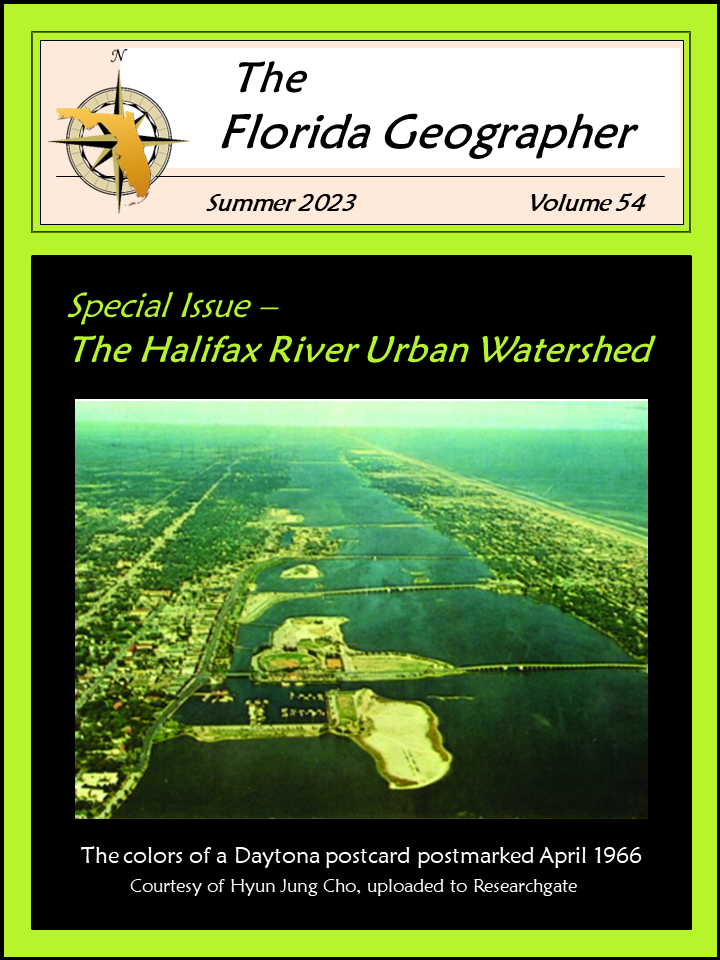Key Waterways in the Halifax River Basin
Abstract
The basin of the Halifax River was formed over millennia, and it has been altered by people’s activities in ways that lead to a need for restoration and protection. The basin was sculpted by changing sea levels, and falling sea levels exposed the barrier island that separates today’s river from the Atlantic Ocean. Although labeled a river, the waterbody actually is a long, shallow estuarine lagoon that became brackish when the ocean washed over the barrier island. People have lived along the estuary for thousands of years because it facilitated transportation and provided valuable natural resources. The first major alterations to the watershed began in the mid-1800s when canals were dredged to create a safe inland passage for steamships and other vessels. In the 1920s, canals to drain the floodplain accommodated the new development demanded by an increasing population. Such large-scale alterations led to unforeseen detrimental impacts. Major portions of the basin became and remain impaired by high levels of nutrients and phytoplankton, low concentrations of dissolved oxygen, and the presence of bacteria that may indicate contamination with sewage. Partnerships with local, state, and federal agencies are addressing these and other impairments. Overall, the waterways of the Halifax River basin require restoration and protection.

